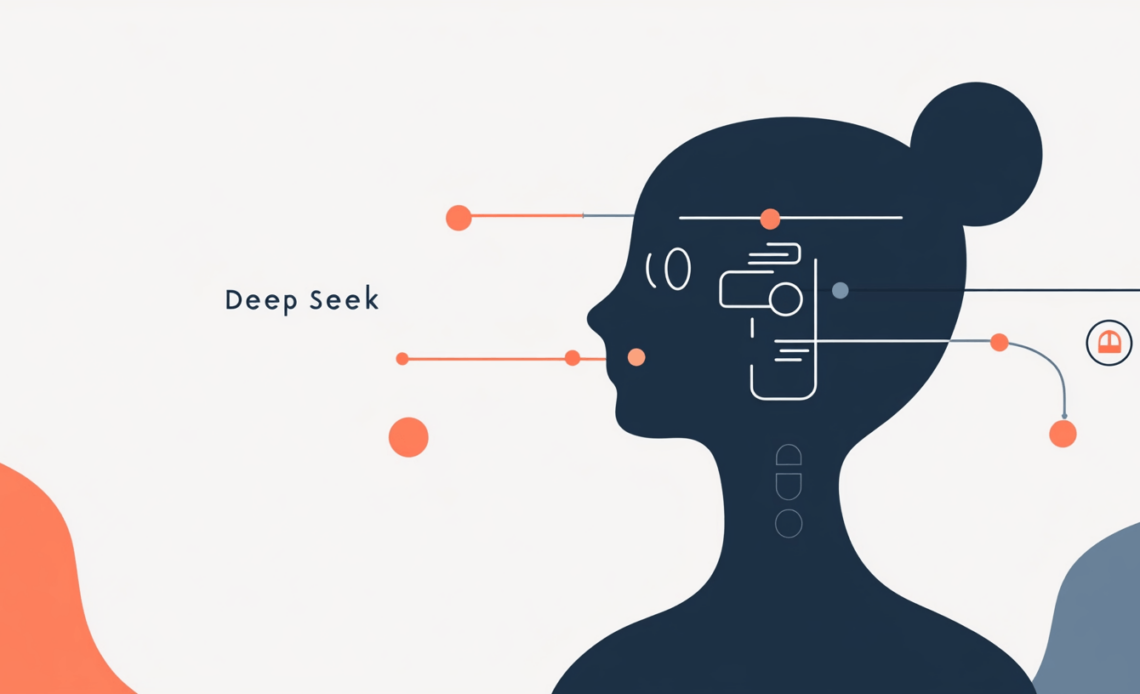
Breaking Down the Barriers of AI Development
The Current AI Paradigm: High Costs and Massive Infrastructure
Training state-of-the-art AI models has traditionally been an expensive endeavor. Leading organizations such as OpenAI and Anthropic allocate upwards of $100 million solely for compute resources. This involves maintaining sprawling data centers equipped with thousands of high-end GPUs, each costing around $40,000. To put it into perspective, it’s akin to requiring an entire power plant to operate a single factory.
DeepSeek’s Disruptive Approach: Cost-Efficient AI Training
Enter DeepSeek. Their approach to training AI models is nothing short of revolutionary. By developing the R1 model, DeepSeek achieved comparable performance to industry benchmarks like GPT-4 and Claude at a fraction of the cost—$5.58 million. This figure excludes pre-purchased GPUs, likely the advanced H800 models, underscoring the impressive efficiency gains.
Innovative Techniques Driving DeepSeek’s Success
1. Precision Optimization: Reducing Memory Usage by 75%
Traditional AI models operate with high precision, often using 32 decimal places for calculations. DeepSeek reimagined this by reducing precision to 8 decimal places, striking a balance between accuracy and resource utilization. This strategic reduction results in a significant 75% decrease in memory requirements without compromising the model’s performance.
2. Multi-Token Processing: Doubling the Speed
Conventional AI models process text sequentially, akin to reading one word at a time: “The… cat… sat…”. DeepSeek’s multi-token system revolutionizes this by enabling the model to interpret entire phrases simultaneously. This approach not only doubles the processing speed but also maintains 90% accuracy. When dealing with billions of words, such efficiency gains are invaluable.
3. Mixture of Experts (MoE): Enhancing Specialization and Efficiency
One of DeepSeek’s standout innovations is their implementation of the Mixture of Experts (MoE) framework. Traditional models activate all 1.8 trillion parameters at once, resembling a single individual trying to excel in multiple professions simultaneously. In contrast, DeepSeek’s model comprises 671 billion total parameters, with only 37 billion active at any given moment. This modular approach ensures that only relevant experts are engaged for specific tasks, optimizing both performance and resource usage.
Impressive Outcomes and Industry Implications
Cost and Resource Efficiency:
- Training Cost: Reduced from $100 million to $5.58 million.
- GPU Requirement: Decreased from 100,000 to approximately 2,000.
- API Costs: Slashed by 95%.
- Hardware Flexibility: Models can now run on consumer-grade gaming GPUs instead of specialized data center hardware.
Open Source Transparency: Perhaps the most remarkable aspect of DeepSeek’s achievement is its open-source nature. By making their code publicly available and thoroughly documented through technical papers, DeepSeek ensures transparency and fosters community collaboration. This openness dispels notions of proprietary magic, highlighting instead the brilliance of their engineering solutions.
Challenging Industry Titans: Nvidia Under Threat
Nvidia’s business model is heavily reliant on selling high-margin GPUs to power AI research and applications. DeepSeek’s innovations pose a direct threat to this model by demonstrating that AI can be developed and deployed using significantly fewer and less expensive GPUs. If the industry adopts DeepSeek’s methods, the demand for Nvidia’s specialized hardware could decline sharply, jeopardizing their substantial market capitalization.
A Disruption Narrative: Rethinking AI from the Ground Up
DeepSeek exemplifies a classic disruption story. While established players continue to optimize existing processes, DeepSeek has fundamentally reimagined the approach to AI development. By questioning the necessity of exorbitant hardware investments and exploring smarter engineering solutions, they have unlocked new possibilities for AI accessibility and scalability.
Future Implications: A More Accessible and Competitive AI Landscape
The ripple effects of DeepSeek’s innovations are profound:
- Increased Accessibility: AI development becomes attainable for smaller organizations and startups without the need for billion-dollar data centers.
- Heightened Competition: Lower barriers to entry intensify competition, driving further innovation and improvement across the industry.
- Diminished Competitive Moats: The unique advantages of big tech companies may erode as more players adopt efficient AI practices.
- Reduced Hardware Costs: The necessity for expensive hardware diminishes, lowering overall costs for AI projects.
Looking Ahead: An Inflection Point in AI Evolution
DeepSeek’s advancements mark a pivotal moment in AI development, akin to the shift from mainframes to personal computers or the advent of cloud computing. As AI becomes more accessible and affordable, the pace of innovation is set to accelerate. Established giants like OpenAI and Anthropic are likely to integrate these efficiency-driven techniques, further transforming the AI landscape.
Embracing the Future of AI with DeepSeek’s Innovations
At Underlabs Inc., we recognize the significance of DeepSeek’s contributions to AI. By making AI more accessible and cost-effective, they are democratizing technology and paving the way for a more inclusive and dynamic industry. As we stand on the cusp of this transformation, the key question is not if, but how swiftly AI will adapt and evolve in response to these groundbreaking innovations.
Embracing these changes will be crucial for organizations aiming to stay at the forefront of technology. DeepSeek’s journey is a testament to the power of innovative thinking and strategic engineering in shaping the future of artificial intelligence.

